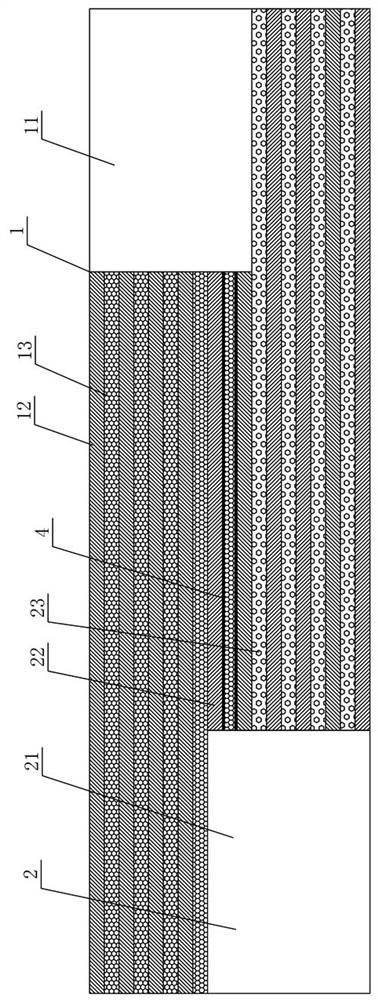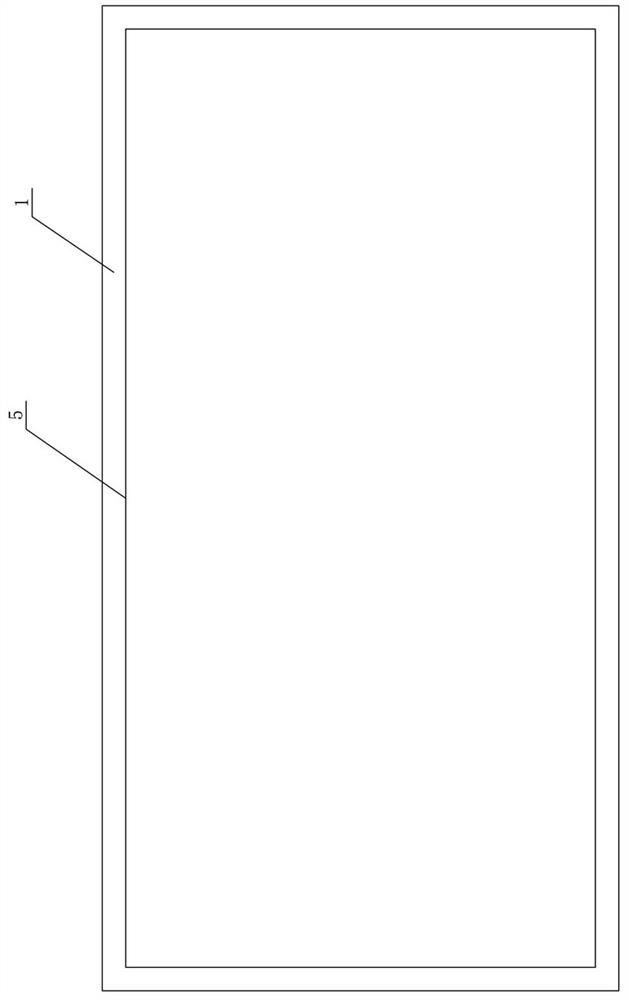Biphasic tissue engineered scaffolds
A biphasic tissue and engineering technology, used in tissue regeneration, prostheses, coatings, etc., can solve the problems of poor mechanical properties of repair parts, abnormal growth of fibrous tissue, and adverse effects of traditional surgery, so as to improve repair quality and promote regeneration. With the effect of healing, accelerated decellularization process
- Summary
- Abstract
- Description
- Claims
- Application Information
AI Technical Summary
Problems solved by technology
Method used
Image
Examples
Embodiment Construction
[0021] The present invention will be further described in detail below with reference to the accompanying drawings and specific embodiments.
[0022] like Figure 1 to Figure 3 As shown in the figure, an embodiment of the biphasic tissue engineering scaffold of the present invention includes a bone scaffold 1 and a cartilage scaffold 2 that are stacked and integrated in sequence from top to bottom. The other end of 1 is transversely cut with a plurality of bone book pages 12 extending to the bone fixation wrapping part 11, and bone differentiated cell sheets 13 are arranged between the bone book pages 12; one end of the cartilage support 2 is set for cartilage fixation. The wrapping part 21, the other end of the cartilage bracket 2 is transversely cut with a plurality of cartilage book pages 22 extending to the cartilage fixing wrapping part 21, and cartilage differentiation cell sheets 23 are arranged between the cartilage book pages 22; 1. The bottommost bone-based book pag...
PUM
 Login to View More
Login to View More Abstract
Description
Claims
Application Information
 Login to View More
Login to View More - R&D
- Intellectual Property
- Life Sciences
- Materials
- Tech Scout
- Unparalleled Data Quality
- Higher Quality Content
- 60% Fewer Hallucinations
Browse by: Latest US Patents, China's latest patents, Technical Efficacy Thesaurus, Application Domain, Technology Topic, Popular Technical Reports.
© 2025 PatSnap. All rights reserved.Legal|Privacy policy|Modern Slavery Act Transparency Statement|Sitemap|About US| Contact US: help@patsnap.com



